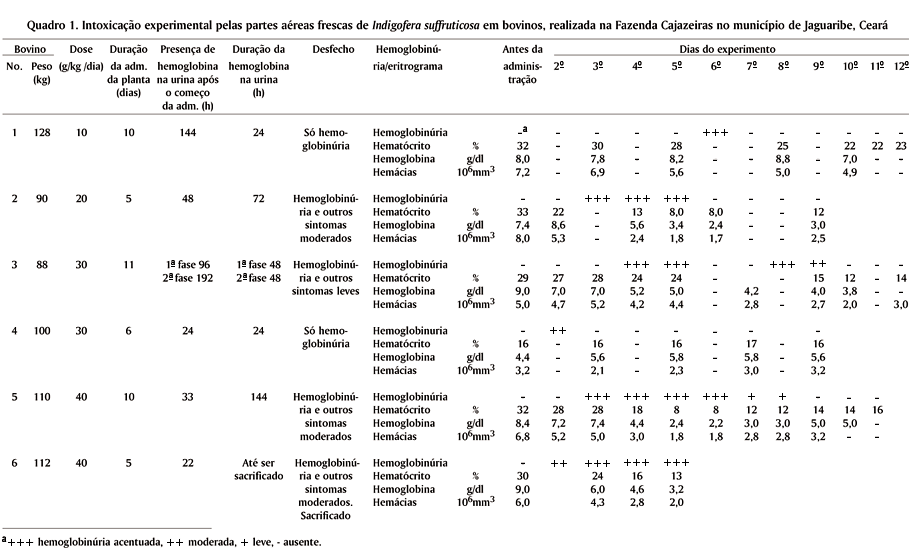The aereal parts of Indigofera suffruticosa Mill. (family Leg. Papilionoideae) were force-fed fresh to 6 bovines in daily doses of 10 to 40 g/kg. Cattle breeders of various parts of the Northeast of Brazil accuse this plant as the cause of a non-fatal disease characterized by hemoglobinuria. The disease occurs only in years when the plant proliferates well invading the native pastures. All experimental animals had hemoglobinuria, which was transitory, inspite continuation of the administration of the plant. Two animals had no further manifestations, a third animal showed only slight other manifestations, and the other three had additional symptoms of moderate intensity. These were apathy, whitish visible mucous membranes, rough hair coat, anorexia, descrease in frequency and intensity of the ruminal movements, tachycardia, positive venous pulse and dispnoea. Before the occurrence of the hemolytic crisis the urine had a bluish-green colour. None of the experimental animals died, but one was euthanized whilst showing hemoglobinuria. Post-mortem findings were anemia, the bladder containing wine-red urine, swollen dark-brown kidneys, liver on the outside and on the cut-surface bluish and with perceptible lobular design. The main histological changes were found in liver and kidney. In the liver there was coagulative necrosis and cloudy swelling and/or cytoplasmatic microvacuolization of the hepatocytes; in the kidney there was severe nephrosis, associated with large amounts of filtrate and/or hemoglobine in the Bowman spaces, in the tubules and also in the cytoplasm of the epithelial cells.
Poisonous plants; plant poisoning; Indigofera suffruticosa; cattle; pathology; hemolytic anemia



